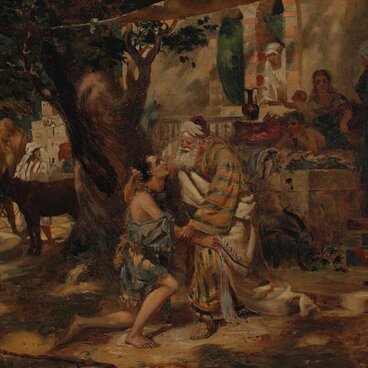The Sevastopol Art Museum named after Mikhail Pavlovich Kroshitsky houses a painting titled “The Shore of the Bay” by the Dutch artist Abraham Storck. The painting depicts typical features of a coastal Dutch town, such as sailboats, churches, houses, and windmills. This is a scene from the daily life and work of the ordinary residents of the world’s largest maritime power.
The Dutch Republic was the largest maritime power in the 17th century. It also became the home of seascape painting. One of the most brilliant representatives of this genre at the turn of the 18th century was Abraham Storck (1644–1708). He was born into a family of renowned Storck artists. Most likely, he was tutored by his father Jan Jansz Storck. In addition, Abraham Storck was also influenced by famous marinists such as the two Willem van de Veldes (the elder and the younger), Jan Abrahamsz Beerstraaten, Ludolf Bakhuizen, and others. Abraham Storck was born and died in Amsterdam. There, he spent his entire life working in his own studio.
Amsterdam started out as a small fishing village and grew into a major seaport. The city thrived on maritime trade, which became the main source of wealth for the Dutch. From there, ships sailed to colonize new lands. Large trading companies were also founded there — the Dutch East India and West India Companies. Dutch ships that sailed the seas and oceans and engaged in whaling featured a recognizable tri-color flag.
The realistic approach to life, typical of Dutch artists, put seascapes in a prominent position. As a result, Storck, like other artists, showed an interest in various maritime themes: Mediterranean harbors, northern whaling scenes, the famous East India Company, battle scenes, and festive receptions of Russian Emperor Peter the Great in Amsterdam. Moreover, the artist had a thorough knowledge of battleships and was able to accurately reproduce their details. However, the main focus of his work was his hometown’s bays, with their boats, ships, and hustle and bustle.


